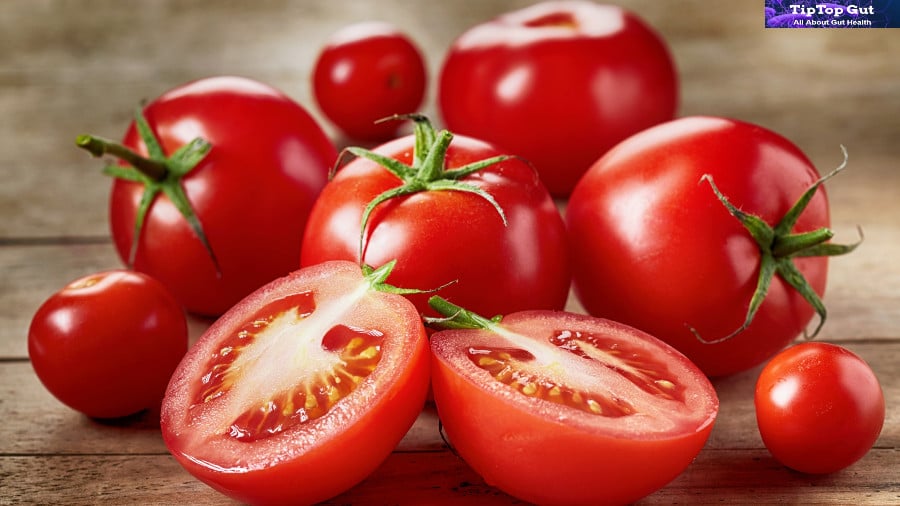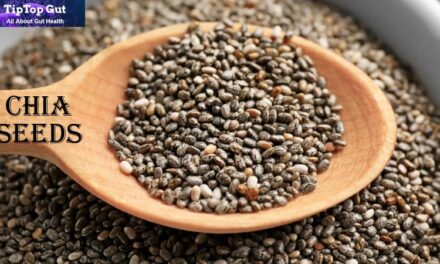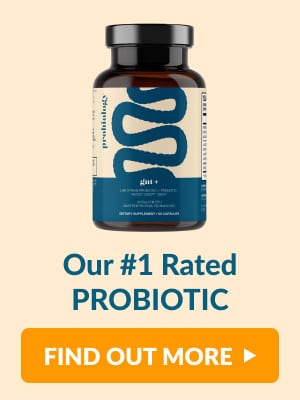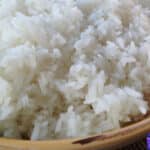The statistics show acid reflux is becoming a common issue all over the globe. According to medical experts, the best methods to control acid rreflux/GERD symptoms are to cut out or decrease the consumption of foods that cause acid reflux symptoms. Tomatoes are among these food items which are believed to trigger heartburn for many people with acid reflux. This might be shocking to some since tomatoes are extremely nutritious and consumed worldwide.
The tomato is a very well-known food item all over the world. They’re rich in minerals, vitamins, and plant compounds that aid your overall well-being. Have you ever had too many tomatoes or drunk the wrong amount of juice from tomatoes? Feel heartburn.
Here, you’re going to explore the answer to a common question, “do tomatoes cause acid reflux?” In reality, no studies have been conducted specifically to determine the impact of tomato consumption on people who suffer from acid reflux.
However, many self-reports from patients reveal how tomatoes and products made from tomatoes are some of the most frequently reported heartburn triggers. The high acid content in tomatoes, particularly the malic and citric acid, is the primary reason acid reflux sufferers typically suffer from heartburn. Eating tomatoes and all the products made from tomatoes can cause Acid reflux.
The American College of Gastroenterology advises that foods with acidic ingredients like tomatoes and citrus fruits can irritate the damaged lining of the stomach.
In the remaining portion of this article, we’ll discuss the connection between acid reflux and tomatoes. Firstly, you’ll read what is acid reflux or GERD.
What is Chronic Acid Reflux / GERD?
When stomach acid flows back to the pipe for food (esophagus), this condition is called Acid reflux.
Normally, the Lower Esophageal Sphincter (LES), a set of muscles located between the esophagus and the stomach, stops stomach acid from rising.
But, there are times when LES relaxes when it shouldn’t, which allows stomach acid to return to the stomach pipe. This may cause some signs, such as heartburn. Every person can experience heartburn occasionally. However, some experience it regularly. Heartburn that occurs more than twice every week is known as Gastroesophageal reflux disease, also known as acid reflux.
Can tomatoes be acidic?
A 4.30-4.90 even though it’s a low pH level, tomatoes possess an alkaline structure Characteristics. After they’ve been digested and metabolized by the stomach and released, they release alkalizing minerals.
However, that doesn’t mean they can’t cause your acid reflux symptoms to become more severe. It’s all about the degree of sensitivity to the digestive tract.
For healthy people, even small quantities of tomatoes may help to alkalize your body.
Do Tomatoes Trigger Heartburn in You?
Patients’ self-reports reveal that tomatoes can be a heartburn trigger for many people suffering from acid reflux.
However, this doesn’t mean you’re bound to suffer from heartburn following eating tomatoes or tomato-based food items, even if you suffer from acid reflux. This is because every person reacts differently to certain foods.
If you’re not sure whether eating tomatoes causes heartburn keeping a food diary will help you reach the right conclusion about this issue.
However, If you’re sure that eating tomatoes or tomato products cause acid reflux symptoms, read the remainder of this report carefully. We will examine the most important causes of tomatoes increasing the chance of experiencing heartburn and the different ways to eat tomatoes and not suffer from heartburn.
They can trigger heartburn in a variety of ways. First, they contain certain acidic substances that cause your gastric levels to increase enough to trigger heartburn and other signs. Additionally, certain tomato-based items like purées, pasta sauces, and juices have sodium and preservatives, which can cause irritation to your esophagus and cause the symptoms of acid reflux.
Why tomatoes cause heartburn?
The most frequent reason tomatoes cause heartburn is that they are sources of certain acids, like malic acid, citric acid, and Oxalic acid.
They force the stomach into producing more acid, which adds to the overall amount of acid present in your stomach. In the end, you’re more likely to suffer stomach pain after eating a lot of tomatoes. They also contain substances that relax the lower esophageal and sphincter muscles. This muscle group helps to keep stomach contents in check by preventing them from rising into your esophagus.
Are tomatoes good for you?
The tomatoes are extremely light on calories. A single cup serving of chopped tomatoes has only 32 calories. Despite that, tomatoes are extremely nutritious, providing a lot of minerals and vitamins.
One of the largest micronutrients found in tomatoes is Vitamin C. Also known as ascorbic acid. This vitamin can help your body develop, grow and repair tissues and cells. It also improves your immune system and helps fight against viruses and bacteria. In addition, vitamin C aids with the iron absorption process making it an important nutritional element to improve blood condition.
They prove themselves a great source of powerful antioxidants, are a good supplement to the heart’s health, and reduce the chance of suffering from heart attacks.
It also reduces levels of cholesterol that are considered ‘bad’ and combats inflammation that keeps your cardiovascular system in top shape.
Why Do Tomatoes Cause Heartburn?
As we mentioned initially, the natural acids found in tomatoes can provide these healthy fruits with possible heartburn triggers for many patients suffering from acid reflux.
The tomato contains more than ten kinds of organic acids. Such as Citric acid, malic acid, and ascorbic acid (vitamin C) are the three most abundant acids found in tomatoes.
In reality, the organic acids found in tomatoes don’t threaten our bodies. They provide some health benefits; for example, they help in the prevention of kidney stones (malic acid) as well as aiding in getting nutrients into the body (citric acid) and helping to repair body tissues (ascorbic acid) ascorbic acid). However, if you’re at risk of acid reflux, the acid in tomatoes could cause heartburn, particularly If you eat them in huge amounts or consume them on an empty stomach.
Malic and Citric Acids High in Tomatoes
They are particularly high in malic and citric acids. Both organic acids may cause or worsen acid reflux symptoms. When these acids are taken in large quantities or when the stomach is empty, the stomach produces excessive gastric acid. This can raise the stomach’s acid levels to push it toward the throat, leading to heartburn. This is also true of citrus fruits. As citrus fruits, like grapefruit and lemon, are rich in citric acid, they are generally not recommended for those suffering from GERD.
Remember that tomatoes do not contain just one acid but many acids that may cause heartburn.
- potatoAscorbic Acid in Tomatoes May Trigger Heartburn
- Another organic acid in tomatoes is called ascorbic acid, also known as vitamin C.
- Although many people don’t realize that tomatoes are an excellent source of vitamin C.
Research suggests that ascorbic acid can increase the chance of suffering heartburn, particularly when consumed with a full stomach. It will cause heartburn when we finish it with an empty stomach.
If tomato products and tomatoes cause you to have severe heartburn cutting them out or limiting their use within your food regimen is a good strategy to decrease the chance of acid reflux-related issues.
But, for reasons of any kind, you may wish to keep eating tomatoes and other tomato-based items.
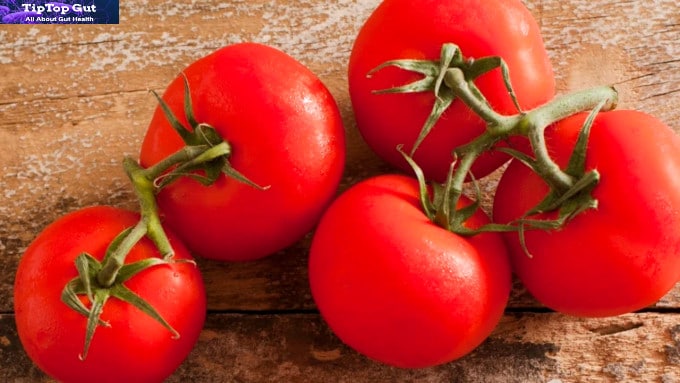
How to Eat Tomatoes to Avoid Heartburn?
Following are some strategies to eat tomatoes to minimize the chances of heartburn.
Avoid Eating Tomatoes On an Empty Stomach
When you eat tomatoes; an empty stomach can trigger an increase in the secretion of gastric juice, which is a source of hydrochloric acid in your tummy due to the increased acidic content of tomatoes. Therefore, avoid eating tomatoes or tomato-based products when you have an empty stomach.
Choose the Ripest Tomatoes
The pH of fresh tomatoes can vary from 4.3 to 4.9, making them acidic food items.
The degree of acidity of tomatoes will depend on the ripeness of their tomatoes. The more mature tomatoes are and the more acidic they will be.
If you’re looking to eat tomatoes with the least acidity possible, consider eating fresh, ripe tomatoes that aren’t processed and sun-dried. The above “may” reduce the chance of developing heartburn.
Canned Tomatoes Tend to Be More Acidic
In general, canned tomatoes have more acidity than fresh ones. The edge of canned tomatoes could be as low as 3.5. The variation in acidity between canned and fresh tomatoes is due to canning. If you experience heartburn from fresh tomatoes, canned tomatoes can more strongly trigger acid reflux.
Remove the Seeds
The seeds of tomatoes contain the bulk of the acid content. So, removing the seeds using spoons or teaspoons can be a great method to reduce the acidity of tomatoes. 25, 26 ]. Acid reflux.
What kind of tomato is the most effective for heartburn?
The more mature tomatoes, the more mild taste they ought to possess. Therefore, you should choose red tomatoes and stay clear of those with yellow or green hues. This may help safeguard your digestive system from inflammation, thus reducing heartburn. If you decide to eat tomatoes, be sure to eat them with their skins. This is important since most digestive-healthy nutrients are located right under it, like fiber.
Cherry tomatoes have the lowest pH (around 3.83). They’re among the acidity. This is because they contain the highest levels of acids found in tomatoes. Also, not everyone will have the same trigger to cause acid reflux or GERD.
If you are a fan of tomatoes with a cherry flavor, you may be able to enjoy them in moderation. Just start small with small portions. A few people prefer cooking tomatoes because it lowers their acidity. This is a good option to avoid cans of tomatoes typically filled with vinegar, salt, and other preservatives. Cooked tomatoes have a milder taste. They are less likely to irritate the esophagus. Cooking tomatoes can aid you in creating your homemade tomato juice and paste without sacrificing nutrition. You can eat them.
Do you think tomato juice is bad for treating heartburn?
Tomato juice pH 4.10-4.60
The juice of tomatoes is more concentrated than raw tomatoes. It has a pH that ranges from 4.10-to 4.60 and acid-forming characteristics.
While certain tomato juices (especially those you prepare at home using fresh tomatoes) are less acidic compounds, they’ll generally irritate your esophagus.
Many doctors advise removing tomatoes entirely from the diet if you tend to suffer from heartburn.
Read More:
Biotics 8 Review: SCAM or A Legit Probiotic for Men?
What can you do with tomatoes to help reduce acid reflux?
Method1: Using Baking Soda
- Cut the tomatoes into chunks and cook the tomatoes on medium-low heat for approximately 10-15 minutes. If you plan to mix the tomatoes into a hot dish, you may not have to cook for the same amount of time. If you chop them into larger pieces, you might need to cook them more. Watch the tomatoes attentively to be able to take them off the stove when they begin to get burned or become too dry.
- Off the flame from the pan and Take 1\4 teaspoon baking soda. This quantity is suitable for making six large tomatoes; therefore, you can alter the baking soda for larger or smaller tomatoes. Stir the baking soda until every piece of tomato is coated with a light coating.
- Baking soda is likely to erupt when it reacts with the acidity of tomatoes.
- Add the other ingredients and cook this food. Once the fizzing is over, which could take up to a minute, cook the dish. Baking soda reduces the dish’s acidity and will not alter the food’s flavor.
Method2: Deseeding and Shortening Cook Times
- Get rid of the seeds in the tomatoes. Carefully slice the tomato in half, centered around what’s known as the equator line. Ensure that one half contains the stem and the other half in the bottom. Use a 1/4 teaspoon or a smaller spoon to scoop out the tomato seeds and dispose of them. Do not scrape too deeply into the tomatoes’ flesh.
- The seeds are responsible for a large portion of the acidity of the tomato plant. Therefore, eliminating them is an effective method to lower the edge.
- Certain dishes are made more delicious by cooking seeds to the fleshy part of the tomatoes. Therefore, consider this when you cut off the seeds.
- Reduce the time for cooking tomatoes. Tomatoes become more acidic after cooking for a long time, So cutting down the cooking time to the minimum amount can help lower the acidity. Sauces and other foods that require a long-simmering time could create a problem. Still, it is suggested not to cook tomatoes for more than 1 1/2 hours.
- It may be necessary to adapt to tomatoes cooked less; However, if you struggle with issues resulting from acidic food, it could be worth it.
- Add tomatoes in the last. If your dish has tomatoes, but still they aren’t the main ingredient, then add the tomatoes after everything else has been cooked for most of the time. This is another method to cut down on cooking time while still making them cook for a few minutes.
- If the recipe calls for simmering ingredients for an hour, add tomatoes in the final 10 minutes. They’ll get time to heat up and absorb more into the dish but will not turn too acidic.
- Include tomatoes that are raw in the dish. Similarly, reducing cooking time could lower the acid content, and avoiding cooking tomatoes completely will decrease the acidity. Raw tomatoes are more acidic than tomatoes cooked. If you can add the tomatoes to your dish basic and not significantly alter the food, it will reduce the amount of acid.[66
- If you’re putting the tomatoes in an oven-ready dish, then the other ingredients will likely increase the temperature of the tomatoes to regulate the temperature within the dish.
Method3: Choosing Tomatoes to Use
- Try to find the tomatoes with the highest ripeness. They lose some acidity as they age, so avoid tomatoes that appear not fully mature. Two ways to test the maturity of the tomato are to feel its weight and a gentle squeeze on the tomato. Pick heavier tomatoes and soft tomatoes.
- More juice means that there is more which is riper. Tomatoes with soft skin but not mushy are riper than hard tomatoes.
- You may furthermore be able to feel the scent of a mature tomato compared to the smell of an unripe tomato.
- Cook using freshly picked tomatoes. The process of canned tomatoes ends with an increase in acidity, which means you can lessen the acidity of your food by cooking exclusively using fresh tomatoes. You’ll need to purchase fresh tomatoes more often than canned ones, as they won’t last as long.
- Pick tomatoes that aren’t red. The tomatoes are available in green, red, yellow, orange, and even combinations in most cases. The tomatoes that are not red are believed to be less acidic. When you next cook your favorite tomato-based dish, Try non-red tomatoes to check if you notice an improvement in the acidity.
- It’s not a simple and fast rule since the red variety has characteristics with low acid and non-red varieties with high acid.
- A few varieties worth keeping in mind include Yellow pear, a variety of tomato similar to cherry varieties Georgia Streak, a yellow heirloom variety, and Big Rainbow, a red-golden tomato.
Frequently Asked Questions about Tomatoes and Acid Refulx
Do tomatoes make acid reflux worse?
The tomato and tomato juices are loaded with citric and malic acids. Both of these can cause the stomach to produce excessive gastric acid. The consumption of tomatoes can cause your gastric acid levels to rise enough to force it to go back up the esophagus.
Can you eat tomatoes with reflux?
While they’re a juicy and sweet fruit, tomatoes can also be extremely acidic. They have two types of important acids known to cause heartburn: malic and citric acids. Due to its pH, tomato may trigger extreme heartburn and acid reflux even when used only to make an eating plan.
How can you make tomatoes less acidic?
The tomatoes are very acidic; therefore, they can cause major problems for those suffering from ulcers or other acid-related digestive issues. It is possible to reduce tomato acidity by adding baking soda to the cooking process after you have cooked the tomatoes. It is also possible to eliminate the seeds, cut them down when you cook tomatoes, or even include them in a dish raw.
Are there acid-free tomatoes?
All tomatoes range from 4.0 to 4.6 on the scale pH, and there isn’t anything like a tomato with zero acids. There are, however, wide varieties of tomatoes with an unacidic flavor. The high sugar levels in these tomatoes make them more balanced in taste and do not have the acidic taste of other varieties.
What varieties of tomatoes have low in acid?
Certain varieties are only low-acid tomatoes. This variety of Persimmon (Lycopersicon esculentum “Persimmon”) matures in around 79 days and produces 12 ounces to 2 pounds of persimmon-colored tomatoes. It is a beefsteak-style tomato resistant to numerous common tomato diseases.
Are Roma tomatoes high or low in acid?
The USDA states: Although tomatoes are usually considered an acid-based food, some varieties are identified to have pH values slightly higher than 4.6. Also, figs have pH values somewhat more elevated than 4.6. Read More Tomato Facts
What is the tomato with the highest acidity?
Heirloom tomatoes were discovered to possess a more acidic pH (meaning they were less acidic) than the hybrid variety. Of the types tested, the ‘Celebrity’ variety “Row Pack and Rutgers were discovered to be more acidic.
How much acid is present in tomatoes?
4.3 to 4.9 The scale pH measures acidity. The scale is 14 to 0, 7 being neutral and the lower part on the scale being the most acid. The pH of tomatoes ranges 4.3 from 4.3 to 4.9, so there isn’t much difference between these levels.
Is green tomato more acidic than red tomatoes?
Although they are acidic mature tomatoes, If you want to preserve them by themselves like crushed tomatoes, the USDA still insists that you use the normal tomato acidification process. Green tomatoes are safe to can using any of the following guidelines.”
Are yellow tomatoes more acidic than red?
Yellow tomatoes tend to be less tart in comparison to red tomatoes. Because they are less chewy, they are great for breakfast or in fresh salads with mixed vegetables. A lot, but not all, yellow tomatoes have lower acidity than tomato red. Certain yellow and orange tomatoes are nearly acid-free.
Concluding the Tomatoes and Acid Reflux
We know now that tomatoes can cause heartburn in people susceptible to them because of their acidity. One study suggests that the acids found in tomatoes might not be the sole reason that tomatoes cause heartburn. Other components found in tomato-based products could be a factor in acid reflux. Other ingredients in tomato-based products may contribute to acid reflux.
A diet that eliminates food items that cause heartburn is among the most effective methods to help manage heartburn. This is especially true when acid reflux isn’t caused by an underlying issue like hiatal hernia or the helicobacter Pylori. If you notice that you are always experiencing heartburn when you eat tomatoes, you might be interested in considering tomatoes as a possible heartburn trigger.
Remember that removing trigger food items from your diet might take too long to resolve the issue completely. If you have suffered from heartburn for a prolonged period, you might have been diagnosed with an autoimmune disease called GERD. If that is so, we strongly suggest you work with your physician.
Read More:
Do Tomatoes Cause Gas and Bloating? Let’s Reveal the Truth!

